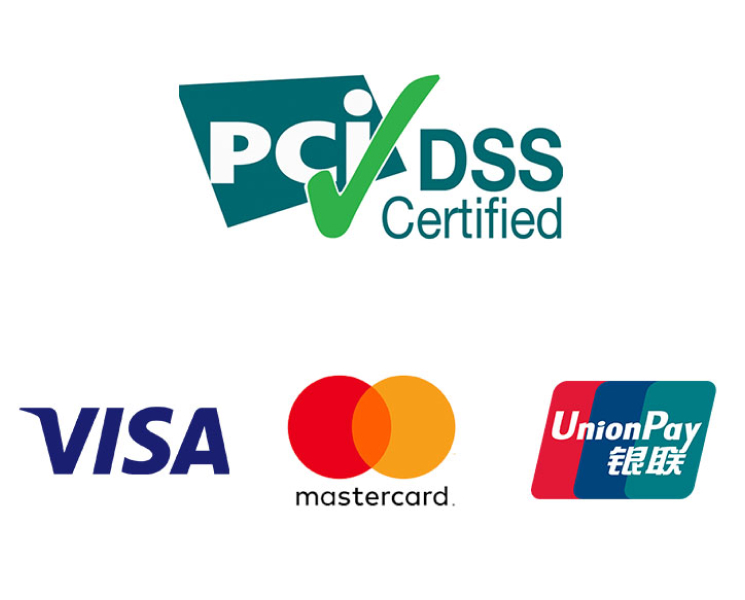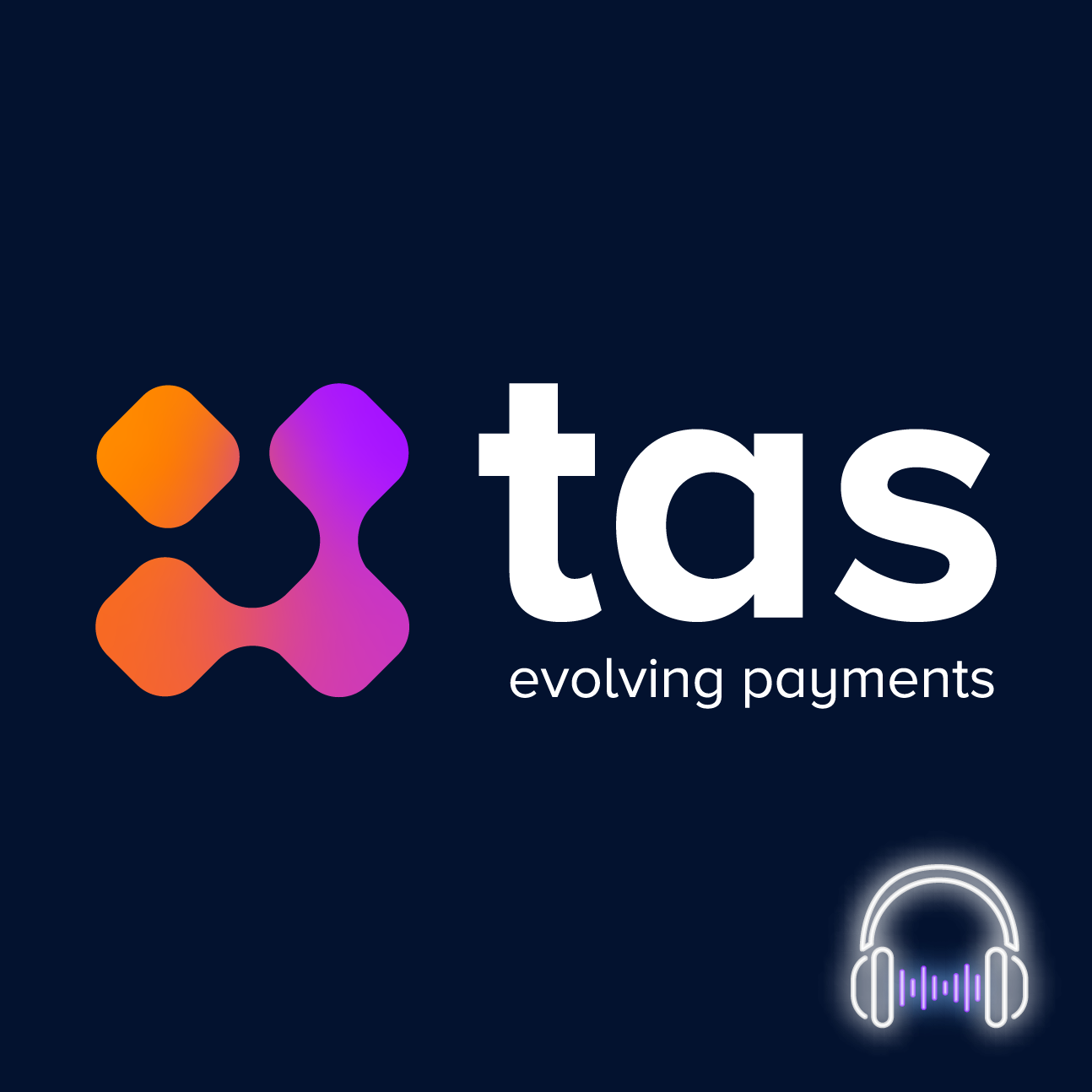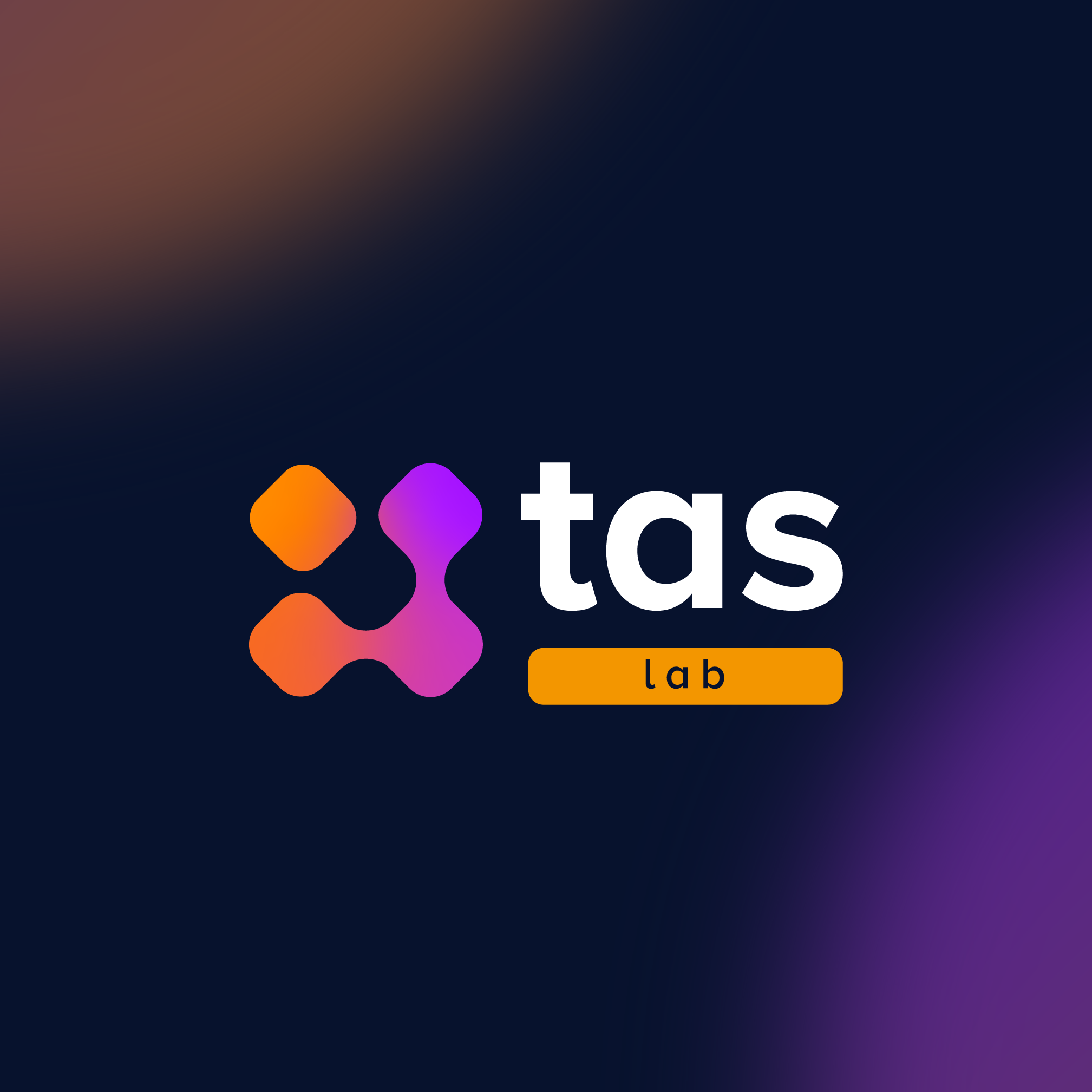Collaborative platforms for interconnected communities
Digitalizing B2B collection and payment processes between companies, their customers and suppliers, both public and private, is an undisputed competitive advantage. TAS has invested in a specific line of solutions that simplify relations between citizens, public administrations, businesses, and the banking system, that promotes collaborative process management between the various actors by adopting an end-to-end approach. Combining electronic invoicing and e-billing services with solutions for the national Digital Agenda and European-wide services such as Request2Pay, we facilitate the adoption of standards and accelerate the network economy, creating value for the whole system.
Talk to our experts
Contact usWelcome to the collaborative era
Our multi-channel collaborative solutions enable new business models
optimizing relations between companies, banks, public administrations and citizens.
Multiple payment channels
e-commerce, e-banking, mobile, privative circuits
Community services
Creation of Value-Added Services for all actors
Simple interfaces
standard protocols and players in the domestic and international landscape with a rich API catalogue
Digitization
End2End digitized collection and payment processes for an easier and more accessible integrated system

A multi-channel platform for e-billing, e-presentment & payment
To benefit both creditors and debtors, our multi-channel platform integrates and automates the collection process – from bills/invoice presentation, to payment, reconciliation, and reporting – providing a turnkey service with the most up-to-date payment methods on the market.
Simplification, streamlining of processes and ease of integration thanks to a rich API catalogue, are key principles of our solution.
Main characteristics:
Enables EBPP (Electronic Bill Payment & Presentment) processing for large billers, private companies and Public Administration
Provides omni-channel access, plurality of collection tools, centralized management of multi-creditor debt positions for payment of goods, services, taxes and duties, in both public and private sectors
Users (consumer or business) can easily keep track of debt positions, automate mass payments, receive complete structured reports
The creditor’s back-office is simplified and the straight through processing of managed transactions is improved; the continuous evolution of payment and collection methods is managed internally by the platform
Integrates and complies with the recent European Request to Pay standard (RTP), which digitizes notifications to debtors allowing them to activate instant or deferred payments according to different use cases and B2C, B2B, B2G, P2P scenarios
Already adopted by many private and public organizations across diverse industries.
We support the entire payment life-cycle
eBilling engine & repository
Central engine managing the entire credit position life cycle
e-Payment Orchestration & Reconciliation
Advanced gateway orchestrating traditional and innovative payment systems workflows
eBilling engine & repository
This is the heart of the platform that manages the entire life cycle credit position, from the first acquisition, to notification and archiving, allowing multiple search filters and the ability to calculate any interest and / or reductions according to parameters set by the creditor. The system is multi-tenant, therefore it allows the hosting of multiple distinct creditors, each of which can set their own rules and parameters for the position life cycle displayed to debtors.
e-Payment Orchestration & Reconciliation
This component orchestrates both traditional and innovative payment methods. It has standard connectors to the Italian CBILL and pagoPA schemes, as well as to the European MyBank scheme. With an embedded Virtual POS, debtors can easily make payments with cards or mobile wallets.
Offline payments are also possible at affiliated branches or Bank ATMs; these are reconciled thanks to the platform booking system which generates a unique debtor reference code at the chosen acceptance point.

Compliance e Certificazioni
Lorem ipsum dolor sit amet, consectetur adipiscing elit. Risus, massa auctor quis in pretium sit suspendisse faucibus. Nullam a sed mauris sit nibh purus, lorem volutpat. Posuere elementum viverra ipsum faucibus arcu.
Accumsan diam molestie sed cum nisl id metus a. Egestas massa cursus cras enim. Faucibus amet sit dictum amet, nibh. Lacus sit dictumst leo consectetur senectus enim sem malesuada. Faucibus aliquet aliquet euismod quis eget.
Success Stories
Some of our clients
Banca Popolare di Sondrio
ICCREA Group
Credemtel
Insights
The new rules for Instant Payments

The recent approval by the European Parliament of new regulations on instant payments marks a new turning point in the payments landscape within the European Union.
Andrea Saracini, Head of IT Payments – BCC Sistemi Informatici Gruppo ICCREA, and Odisseo di Michele, Business Development Manager of TAS, discuss about the impact of the new instant payment regulations, highlighting the implications for both Corporate and Retail banking customers.
Andrea Saracini emphasizes the importance of cost equalization between ordinary and instant payments and the need to ensure security through consistency checks and behavioral analysis. The use of the cloud is explored to ensure efficiency and scalability of infrastructures, and a future is outlined in which the digital euro will represent a natural evolution towards fully instant payments.
Data and Anti-Fraud Measures: The Two Drivers for Adapting to Instant Payments

TAS is assisting banks in analyzing the necessary steps to comply with the upcoming implementation of instant payments, set for 2025. The focus is on managing higher transaction volumes instantaneously and the need to enhance anti-fraud measures.
More data to analyze in real-time and new security measures to implement are the two main concerns for the financial sector, grappling with the recent directive on instant payments. “Instant payment is a service that allows the payer to execute a transaction that is immediately credited to the beneficiary’s account,” says Odisseo Di Michele, Business Development Manager at TAS. “With the new regulation that came into effect a few months ago, instant payments are now treated like regular transfers, with settlement on the next business day, now instant. This service must be available across all channels where customers typically place payment orders, applying the same price to both types of transfers.”
The Surge in Instant Transfer Volumes
Given equal fees, consumers might favor instant transfers, leading to a surge in transaction volumes to be managed. “In 2023, an average of 25 to 30 million SCT payments were processed daily in the euro area, with a daily settlement of 80 to 100 billion,” Di Michele notes. “Currently, instant payments average a couple of million transactions per day, with a value of a few million. The increase in instant payments could reach peaks requiring significant infrastructure upgrades, and using the cloud might be the right approach.”
Handling Corporate Payments
Instant processing won’t be limited to retail transactions but will also include corporate transactions. “The corporate segment will also be assured instant transfers at the same price, and payments will need to be processed as soon as they are received. This will change the banks’ payment management paradigm,” says Di Michele. “Today, corporate flows are received and processed in the evening; tomorrow, banks will need to split payment orders and see if there are instant payments to execute immediately.”
Verifying the IBAN-Beneficiary Match
The new requirements impact not only transaction volumes but also security levels, which must be raised without compromising the instant nature of these payments. “The regulation introduces mandatory and free verification of the match between the IBAN and the beneficiary’s name (first and last name, legal entity, or VAT number). This aspect represents the most challenging change,” highlights Di Michele. “The check must be performed by the beneficiary’s bank, requiring instant communication between the ordering and beneficiary banks, operational across the euro area. Technically, this is not easy to implement.”
Bank and Payer Responsibilities in Instant Payments
If the IBAN check matches, the payment proceeds instantly. Otherwise, the process becomes more complex. “The bank must ask the payer if they want to proceed despite the mismatch. Without verification, in case of fraud, the bank must refund the amount,” Di Michele explains. “To combat fraud, it is necessary to leverage AI to study suspicious behavioral patterns and enhance financial education to make users aware of the risks.”
The Adaptation Timeline
By January 2025, banks that do not yet offer the service must be ready to ensure the receipt of instant payments and activate additional controls on financial restrictions to limit AML and fraud cases, as well as adjust pricing. “By October next year, it will be mandatory to offer instant payments among the transfer types on all touchpoints, along with verifying the IBAN-beneficiary match, which will extend to EMIs and payment institutions by 2027,” concludes Di Michele. “We are currently supporting banks in the analysis phase, focusing on application adjustments. We see good opportunities to offer a high level of service through a cloud infrastructure, integrating the needed services and optimizing payment processes to comply with the new requirements.”
Source: AziendaBanca “Dati e antifrode: i due driver per adeguarsi ai pagamenti instant.”
English version of the article by TAS.
New Rules for Instant Payments

The revolution of Financial Transfers across borders continues for an increasingly digitalized, fair, and efficient Europe.
The recent approval by the European Parliament of new regulations on instant payments marks a new turning point in the payments landscape within the European Union.
The recent provisions, which will come into effect 20 days after publication in the Official Journal of the EU, aim to ensure the promptness of money transfers between consumers’ and businesses’ accounts, representing a significant step towards greater financial efficiency and security.
With the new rules, all payment service providers must offer customers the possibility to make instant transfers that take no longer than ten seconds from approval, at any time and day. This will result in almost immediate liquidity for individuals and businesses, promising to significantly improve the daily operations of millions of Europeans. Additionally, the costs of instant payments must not exceed those of regular transfers.
The new regulation also outlines an efficient process for handling multiple orders of instant fund transfers sent in bundles to Payment Service Providers (PSPs), with particular attention to businesses in business-to-business (B2B) payments. When a Payment Service User (PSU) sends a package of instant fund transfer orders, the receiving PSP must immediately split the package, turning each order into individual transactions of instant credit transfer.
Furthermore, currently, payment and electronic money institutions are excluded from the definition of “entity” in Directive 98/26/EC, limiting their participation in instant euro transfers. The regulation aims to include them, allowing them to participate in Payment Systems and contribute to the adoption of instant fund transfers.
Another significant aspect of the regulation is the applicability of the new rules even in member countries that do not use the euro as the official currency, provided their bank accounts support regular euro transactions. This will ensure widespread sharing of the benefits of instant payments, further promoting economic integration among EU countries.
The new regulation emphasizes the importance of anti-fraud measures, requiring payment service providers to implement advanced fraud prevention systems and offering consumers tools to limit risks, such as the ability to set a maximum amount for instant transfers.
One of the main novelties is also the obligation for payment service providers to verify the correspondence of beneficiary names and IBANs for all transactions.
Additionally, the regulation ensures universal access to instant euro fund transfers for all Payment Service Users (PSUs). It states that there should be no disparities in the channels used to initiate instant payments compared to other types of fund transfers.
TAS’s solution for Instant Payments fully covers compliance with the new regulation, with the possibility of adopting the platform modularly and as a service.
Thanks to ur long-standing relationships with most Italian banks, TAS has become a leader in Instant Payments solutions in Italy and has in-depth market knowledge and a unique ability to meet the needs of financial institutions in the product adoption journey.
With its expansion across Europe, TAS is well-positioned to drive innovation in the instant payments sector, offering a comprehensive, modular, and innovative solution that meets the needs of Italian and European banks.
Our commitment is indeed to be a true partner for banks, working closely with them to understand and meet their specific needs.
The modularity of the solution allows banks to choose only the necessary components and design a tailored architecture based on their specific requirements. Additionally, our solutions are based on a modern architecture designed to ensure complete service continuity, with real-time operations 24 hours a day.
Our offering model is based on a very flexible approach and can be implemented in the cloud, on-premises, or in SaaS mode, allowing for rapid and effective time to market.
Key features of TAS solution:
- Full compliance with SEPA Inst protocol requirements: complete processing time <10 sec., Timeout management.
- Cloud-native platform: for a turnkey offering with real-time 24 × 7 operations.
- Omni-channel: corporate portal, retail banking, back-office, etc.
- API interfaces: for payment initiation, reachability, and message requests.
- Message enhancement: message data enrichment through integration with core banking.
- Message screening: message verification through integration with screening systems (e.g., AML, Fraud, etc.).
- Message pairing and r-messages: Pairing of related messages and management of r-messages.
- “Four Eyes” principle: workflow can be defined with multilevel approval processes wherever necessary.
- Error alert: notifications can be sent in case of errors.
- Scalability and fault tolerance: the solution ensures full vertical and horizontal scalability.
- Certified full SWIFT message interface: the message network interface is a fully certified SWIFT application.
Contact our experts to find out how TAS can support you in implementing fast, effective, secure, and fully compliant solutions with the new regulations.
Investing in AI: From Intelligent Chatbots to Fraud Prevention

We continue to invest in innovation within the payment sector by introducing advanced artificial intelligence (AI) solutions aimed at significantly improving efficiency, security, and overall user experience.
Now available on our website is an intelligent chatbot named LIA, designed to respond to user inquiries quickly and efficiently. This is just one example of our innovation journey focused on two main areas: integrating advanced AI-based features into our products and optimizing internal processes through the effective implementation of AI.
Enhanced Security with “Fraud Protect”
Security in payment systems is an absolute necessity, especially in the digital context that poses continuous challenges and threats. “Fraud Protect,” our fraud management solution, now incorporates advanced AI technologies to identify suspicious transaction patterns, significantly enhancing fraud prevention and anti-terrorism security. Additionally, the introduction of the intelligent chatbot “IVIC,” which engages with users in potential risk situations, improves customer experience and helps reduce false positives.
Optimized Transaction Processing and Reconciliation
AI plays a crucial role in automating transaction processing and reconciliation processes. By reducing manual errors, we increase operational efficiency, ensuring greater accuracy in transactions. Predictive analysis plays a fundamental role in managing transaction peaks, allocating resources more efficiently. TAS’s Banking Treasury product is evolving to implement AI-based predictive treasury models, capable of predicting liquidity needs in real-time, even on an intraday basis.
Global Impact of Artificial Intelligence in Payment Systems
We believe that the use of AI in the production process of payment systems has become essential and capable of influencing productivity, quality, and product innovation. From transaction processing to project management to customer support, AI is transforming every aspect of the process, opening new horizons in an ever-evolving industry. That’s why we continuously invest in integrating new AI-based technologies into our products to stay ahead and ensure increasingly effective and secure payment solutions.
Demystifying Card Issuing: Understanding the Process and Significance

The card issuing industry continues to evolve and adapt to changing consumer needs, technological advancements, and regulatory developments. Innovations such as digital wallets, virtual cards, and biometric authentication are reshaping the landscape of payment solutions. Card issuers are embracing these developments to enhance security, improve convenience, and deliver seamless user experiences. The future of card issuing holds in fact the promise of even more flexible, secure, and personalized payment options for consumers worldwide.
By understanding the significance and intricacies of card issuing, we would like to give a deeper appreciation for the convenience and opportunities that payment cards provide in our everyday lives. Whether it’s debit cards, credit cards, or prepaid cards, these little plastic rectangles enable us to make purchases, access funds, and enjoy a myriad of financial services. Behind the scenes, a complex process known as card issuing takes place and, in this article, we’ll demystify card issuing, shed light on its significance, and explore the key steps involved.
What is Card Issuing?
Card issuing refers to the process of creating and distributing payment cards to consumers, allowing them to access financial services and make transactions. The issuing entity, typically a bank or financial institution, produces and provides these cards to customers. Card issuing involves a series of steps, from application and approval to card production, personalization, and delivery. The ultimate goal is to provide users with a secure and convenient payment method that aligns with their financial needs.
The Significance of Card Issuing
Card issuing plays a pivotal role in the modern financial ecosystem, facilitating economic transactions and empowering individuals with greater financial flexibility. There are a few key reasons why card issuing is significant:
Payment Convenience: Cards offer unparalleled convenience, allowing users to make purchases both in-store and online, eliminating the need for carrying cash. With the rise of contactless payment technology, cards have become even more convenient, enabling swift and secure transactions with just a tap or wave.
Financial Inclusion: Card issuing promotes financial inclusion by providing individuals with access to banking and payment services, even if they don’t have a traditional bank account. Prepaid cards, for example, can be a viable solution for the unbanked and underbanked populations, enabling them to manage their finances, receive payments, and participate in the digital economy.
Security and Fraud Protection: Card issuers prioritize security, implementing various measures to protect users from fraud and unauthorized transactions. Features such as EMV chips, PIN verification, and tokenization enhance security and reduce the risk of card-related fraud. Additionally, card issuers often offer liability protection to shield customers from unauthorized charges.
Consumer Benefits: Card issuing entities frequently offer a range of benefits and rewards to attract and retain customers. These may include cashback programs, travel rewards, purchase protection, extended warranties, and access to exclusive events. Such perks enhance the overall value proposition of cards and incentivize card usage.
The Card Issuing Process
Now, let’s delve into the key steps involved in the card issuing process:
Application and Approval: Individuals apply for a payment card, typically through a bank or financial institution. The issuer evaluates the application based on the applicant’s creditworthiness, income, and other relevant factors. Upon approval, the process moves forward.
Card Production: Once approved, the issuer proceeds with card production. Modern payment cards are made of durable plastic and can be embossed or printed with the cardholder’s name and other essential details.
Personalization: To enhance security and customization, the card is personalized by encoding a unique magnetic stripe or embedding a chip. This allows the card to be associated with the user’s specific account and enables secure authentication during transactions.
Activation: Before the card can be used, it needs to be activated. This can be done through various channels, such as online activation portals, automated phone systems, or by contacting the issuer’s customer service.
Distribution: Once activated, the card is delivered to the cardholder. It can be sent by mail to the registered address or made available for pickup at a designated branch. The issuer ensures that appropriate measures are taken to safeguard the card during transit.
Usage and Management: Cardholders can now use their cards to make purchases, access funds, and enjoy the associated benefits. The issuer manages the cardholder’s account, tracks transactions, sends periodic statements, and handles any customer service inquiries or issues.
As already anticipated, the card issuing industry continues to evolve and adapt to changing consumer needs, technological advancements, and regulatory developments. Besides the presence of plastic cards there are some notable trends and developments that the card issuing industry is already facing:
Digital Wallet Integration: Card issuers are increasingly integrating their payment cards into digital wallet platforms such as Apple Pay, Google Pay, and Samsung Pay. This allows users to add their cards to these mobile wallets for convenient and secure mobile and contactless payments.
Contactless Payments: The adoption of contactless payments has been on the rise, driven by the need for quick and hygienic transactions. Card issuers are issuing contactless-enabled cards with near field communication (NFC) technology, enabling users to make payments by simply tapping their cards on compatible payment terminals.
Virtual Cards: Virtual cards, which are card details issued without a physical card, have gained popularity. These cards are typically used for online or mobile transactions, providing added security and convenience. Virtual cards can be generated instantly, allowing users to make purchases without waiting for a physical card to arrive.
Open Banking and API Integration: With the emergence of open banking initiatives and application programming interfaces (APIs), card issuers are collaborating with third-party fintech companies to provide innovative financial services and experiences. This allows for seamless integration of card services with various applications, enabling users to manage their finances more effectively.
Rise of Prepaid Cards: Prepaid cards, which are loaded with funds in advance, are gaining popularity due to their flexibility and accessibility. They offer a viable payment solution for the unbanked and underbanked populations, as well as for budgeting and travel purposes.
TAS Card Issuing Platform: build a personalized card program
A modern card issuing platform is one that enables individuals to access financial services, make transactions, and participate in the digital economy. These trends reflect the ongoing efforts of TAS in the card issuing industry to enhance security, convenience, and customization while adapting to changing consumer preferences and the evolving digital landscape.
To meet the evolving needs of its clients, the TAS Card Issuing Platform encompasses a range of features and capabilities that are key factors to build a truly personalized card program.
This modern platform has strong card personalization capabilities allowing issuers to customize their card programs in terms of set up, basic data and personal information associated with cardholders, type of cards, hierarchies, limits, fees, rates etc. Thanks to these high configurability features, each card program is unique and aligned with the issuer’s business needs and strategy.
Besides personalization, one of the major concerns of TAS clients is security. For this reason, TAS has continually invested in security measures to protect its clientsagainst fraud and unauthorized transactions. Through sophisticated algorithms, the card issuing platform monitors, investigates and report transactions of a suspicious or unusual nature to ensure reliability 24/7.
Some of the greatest innovations the TAS platform brings to its clients is the ability to issue physical, virtual, and tokenized cards which can be added to the cardholders digital wallets and make mobile and contactless payments using their smartphones or other digital devices. Furthermore, the platform supports additional security measures such as encryption, multi-factor authentication, and risk management tools to mitigate risks associated with card-based transactions.
To guarantee an even more flexible, secure, and personalized payments, here are some of the key features the TAS card issuing platform supports:
Open API: to facilitate integration with third-party applications and services to guarantee seamless connectivity and collaboration with other fintech solutions.
Real-time Transaction Monitoring: the platform offers real-time transaction monitoring capabilities, providing issuers with visibility into cardholder transactions, including spending patterns, geolocation, and suspicious activities.
Card Management and Lifecycle Services: this includes functionalities such as card activation, deactivation, blocking, reissuance, and replacement.
Analytics and Insights: this allows issuers to gain valuable insights into cardholder behaviour, spending patterns, and trends. Data-driven insights enable issuers to make informed decisions, optimize card programs, and enhance customer experiences.
Scalability and Flexibility: it supports the growth and expansion of card programs, accommodating varying card types, multiple currencies, and evolving business requirements. The TAS Card Issuing Platform can handle increasing transaction volumes and adapt to changing market dynamics.
These key features empower card issuers to deliver secure, innovative, and personalized payment solutions to their customers. By leveraging the modern TAS card issuing platform, issuers can streamline their operations, enhance cardholder experiences, and stay competitive in the rapidly evolving payment landscape.
To discover more, contact our experts and request a free demo.
Bringing physical and digital together with TAS Remote Teller

TAS Remote Teller allows bank customers to carry out all the operations traditionally carried out in the branch with the teller and get in touch with a remote bank operator to enhance the bank-customer relationship thanks to technology.
An automated counter where you can carry out banking operations and speak remotely with an operator. It is TAS Remote Teller, a solution at the centre of a pilot project within one of the major Italian banking groups. The goal is to offer an automated branch, which allows you to supervise even remote areas, reducing costs significantly compared to a traditional branch. «Without however renouncing the quality of the service, the possibility of cross-selling and generating empathy and trust in the banking customer – says Valentino Bravi, CEO of TAS. By reducing branches to save costs, there is the risk of losing quality, because the branch is increasingly distant from the customer. At the moment this solution is being tested at some pilot branches of one of the major Italian banking groups and the extension of this model to other branches is also planned».
The customer talks to the operator via video
With a view to a hybrid evolution of bank branch models, the Remote Teller adapts to unattended branches: simple sitting rooms are enough to ensure privacy and comfort for the customer, characterized by the bank’s brand identity, of course. But it also finds a place in already manned branches, to streamline traditional operations and allocate the offices to other consultancy or value-added activities. «The customer who enters the branch authenticates himself with his payment card at the counter – explains Bravi. In front of him he will therefore find a maxi screen, or even more than one, where he can get in touch with a remotely connected teller, who will follow him in all the traditional operations that are carried out at the bank teller, through simple steps and a video monitoring». The TAS Remote Teller solution offers a very wide range of accessible services, covering more than 95% of the operations that are usually carried out at a bank branch.
More trust, more cross selling
The advantage is therefore to offer the same quality of service provided in presence. But by reaching customers in unmanned areas and also activating cross-selling strategies by leveraging the bank-customer relationship, even if remotely. «The possibility of speaking with an operator generates empathy and allows tellers to better understand the needs of the customers they are following – underlines Bravi. It can therefore happen that you intercept and have to respond to new customer needs: the solution therefore allows you to pass the connection to another operator, specialized for example in mortgages, or investments. A relationship of trust is generated with the operator, as well as with the bank, precisely thanks to the technology, favouring customer retention, as well as the sale of new products”.
The launch of the pilot with an Italian bank
TAS also announces that a pilot project has started with one of the four major Italian banks. The goal is to bring the Remote Teller to the branch and extend this new model to various branches in the area. «Within 2 months we integrated our solution – explains Bravi. Naturally it is a customizable tool on the needs of the bank and can also be integrated through the API interfaces».
The future evolution: the shared branch
In the future, this technology could also allow banks to review their real estate strategies: think of a bank branch in a shopping centre or at a hospital. Or, again, within spaces shared with other players, banking and non-banking. «Beyond the regulatory limits, the evolution we are starting to think about is that of the shared branch, like a multi-bank store – concludes Bravi. There are a series of problems to overcome, such as cash management, but it would certainly allow banks to reduce costs, creating shared areas, where an assistant who takes care of receiving customers is sufficient”.
Accelerate the digitization of payments
TAS has created a series of end-to-end solutions for digital payments, which allow banks and e-money players to digitize payment management, also launching innovative solutions: from payments through digital wallets, up to PagoPA. «Furthermore, our Global Payment Platform (GPP) integrates with any type of payment and offers a series of advanced services, security for example – declares Bravi – but also advanced analytics solutions and anti-fraud systems» TAS also manages the world of POS services, ATMs and advanced counters. «The latter are ideal tools for people who are familiar with monitors and computers or portable devices – Bravi said. But the basic functions are so simple that, according to our surveys, they are also used by the more mature clientele who are reluctant to use digital devices. In case of difficulty, they can always contact the teller, who will be connected and will supervise the processes at each step, just like at a traditional bank teller”.
Author: AziendaBanca by G.C “TAS. Lo sportellista da remoto, per unire fisico e digitale”
English Translation by TAS
New payment experiences – SoftPos

One of the latest TAS solutions aimed at improving the user and merchant shopping experience is SoftPos, a product that is able to transform Android smartphones and tablets into contactless payment terminals, without the need for any hardware support.
SoftPos is an application that merchants can download onto their devices to turn any Android (NFC-enabled) mobile device into a payment acceptance device.
SoftPos is a completely software-based alternative to traditional payment terminals. With SoftPos, merchants can carry out contactless transactions on their mobile devices, facilitating the acquisition of PINs and authentication, without the need for additional hardware and maintaining a very high level of security.
This is a huge advantage, especially for small merchants who can make the most of the solution thanks to the low costs and operational advantages of the technology, especially in sectors where the use of contactless cards has become widespread.
In fact, for micro-businesses SoftPos is a simpler and cheaper way to accept credit or debit card payments, avoiding having to spend on the purchase of extra hardware devices.
In addition, traditional hardware can present greater barriers to adoption because you need to get to know the device while using your smartphone faces less risk of error and have a greater propensity to experiment with new use cases.
Even for large commercial realities, subject to large influxes of customers especially at certain times or periods of the year, the advantages of SoftPos are many: the possibility of offering a payment process without interruptions, the multiplication of payment points without investments in physical workstations, the possibility of acquiring payments on the go, the ease of training both the merchant and the employees on the process, the virtualization of the receipt with automatic sending to the customer’s email.
For the cardholder, it will only be necessary to decide which payment method to use between cards and mobile wallets (Apple Pay, Google Pay, Samsung Pay) on their device and wait a few seconds until the transaction is completed. If a PIN is required, the app will display a PIN PAD where you can enter the data.
All this in maximum security: SoftPos is managed by TAS and is certified on the highest security standards for payment applications.
The App is available on the Google Play Store and can be used in white-label mode, allowing the rebranding of the solution or easily integrate it with any App already in use by the merchant.
The next developments include the extension of payments to the Bancomat circuit and, as soon as possible, a similar version for IOS.
From the US Market: Our Mastercard NEX service keeps getting better

In 2020, TAS introduced a new service to allow out-of-the-box connectivity to all the major US signature networks, such as Mastercard and VISA, and to the major Debit Networks such as Star, NYCE and Pulse. This delivers real benefits and convenience to both Issuers and Acquirers who are able to easily, quickly and securely accept a wide range of traditional and innovative payments, with TAS acting as an aggregator of network traffic towards Mastercard Network Gateway Services (MNGS).
Mastercard has renamed the service to Mastercard Networks Exchange (NEX), an intelligent routing platform that provides one connection to global and regional payment rails, reducing the cost and complications of managing individual connections. This unified approach from a trusted connectivity partner can help overcome fragmented network access and create unrivaled economies of scale.
We offer NEX in a flexible SaaS mode deployed on the Cloud for simple onboarding as a stand-alone service, seamlessly interfacing with your platforms and applications. The solution has proven to be successfully scalable and able to manage a growing volume of network traffic.
More updates also in the issuing area where we started delivering our 3D Secure component to the US market. This optimizes our customers’ buying experience while increasing sales and reducing fraud. The 3D Secure component permits the application of the EMVco standard and allows the creation of customized authentication experiences for cardholders during transactions. Today, as a result of requests from our customers, we have expanded the set of supported transactions and provide our clients with a full EMVCO-compliant chip and PIN.
Regarding the acquiring area we are onboarding a new client, a US based Fintech company focused on streamlining payments and data for the Insurance Industry by providing cost-effective payment solutions and tools to drive insurance carrier adoption and customer conversion. They will manage through the NEX Gateway Credit and Debit transactions, Card Present and e-commerce.
TAS Lab, our new research department

TAS Lab is our new research department which aims to continuously invest in innovation in the financial sector. The purpose of TAS Lab is to design technologically advanced solutions that improve how people use financial services, developing state-of-the-art products to provide banks and companies with a competitive advantage in the market.
The department currently focuses on three main research areas: quantum computing for payment fraud prevention, the development of a new phygital model of bank branches (TAS Remote Teller) and the applications of artificial intelligence to the world of payments.
Quantum computing is an emerging technology that promises to revolutionize the way data and financial transactions are handled. TAS Lab, together with the University of Verona (Italy), is exploiting this technology on concrete use cases to develop advanced solutions for the prevention of payment fraud, which allow banks and financial institutions to manage payment transactions more securely and efficiently.
The phygital bank branch, or TAS Remote Teller, represents a new frontier in the banking sector, which combines the advantages of physical presence with the convenience of digital technology. TAS Lab is exploring how this technology can be used to improve the customer banking experience, guaranteeing the physical presence of streamlined branches on the territory with virtual assistance that allows the user to carry out all the banking operations of a traditional branch in a simple and fast way.
Finally, TAS Lab is investing in artificial intelligence, developing advanced algorithms and machine learning technologies to improve data management and financial transactions.
If you are a research institution, a company or an individual with a passion for technology and innovation and are interested in collaborating with TAS Lab, please get in touch with us to submit your idea. The department is always looking for new projects and solutions.
Contact us at solutions@tasgroup.eu to find out how we can create the future of financial services together.
To write this article we used the artificial intelligence of Chat GPT, starting from our ideas💡.
TAS @ NACUSO Network Conference

27-30 March 2023 | Wynn Las Vegas Resort
Las Vegas is set to host one of the most anticipated events in the credit union industry. The 2023 NACUSO Network Conference will offer an exciting lineup of Keynote Speakers to challenge, inspire and encourage you with their insights. Additional topics will cover regulatory issues, cybersecurity, cryptocurrency, state of the industry and CUSO hot topics.
We are thrilled to be part of this eventful moment as we showcase our latest products and services, as well as meeting with credit union leaders from across the country.
We invite you to stop by our booth to discover our advanced digital payments issuing platform that enables you to build business functionalities and deliver rich digital user experiences, across any channel, quickly and with minimum effort.
Contact us to learn more about our company and how we can help your credit union thrive.
We look forward to seeing you in Las Vegas!
Discover also our solutions for
Contact us
Get in touch to discover how we can help in achieving your business goals
